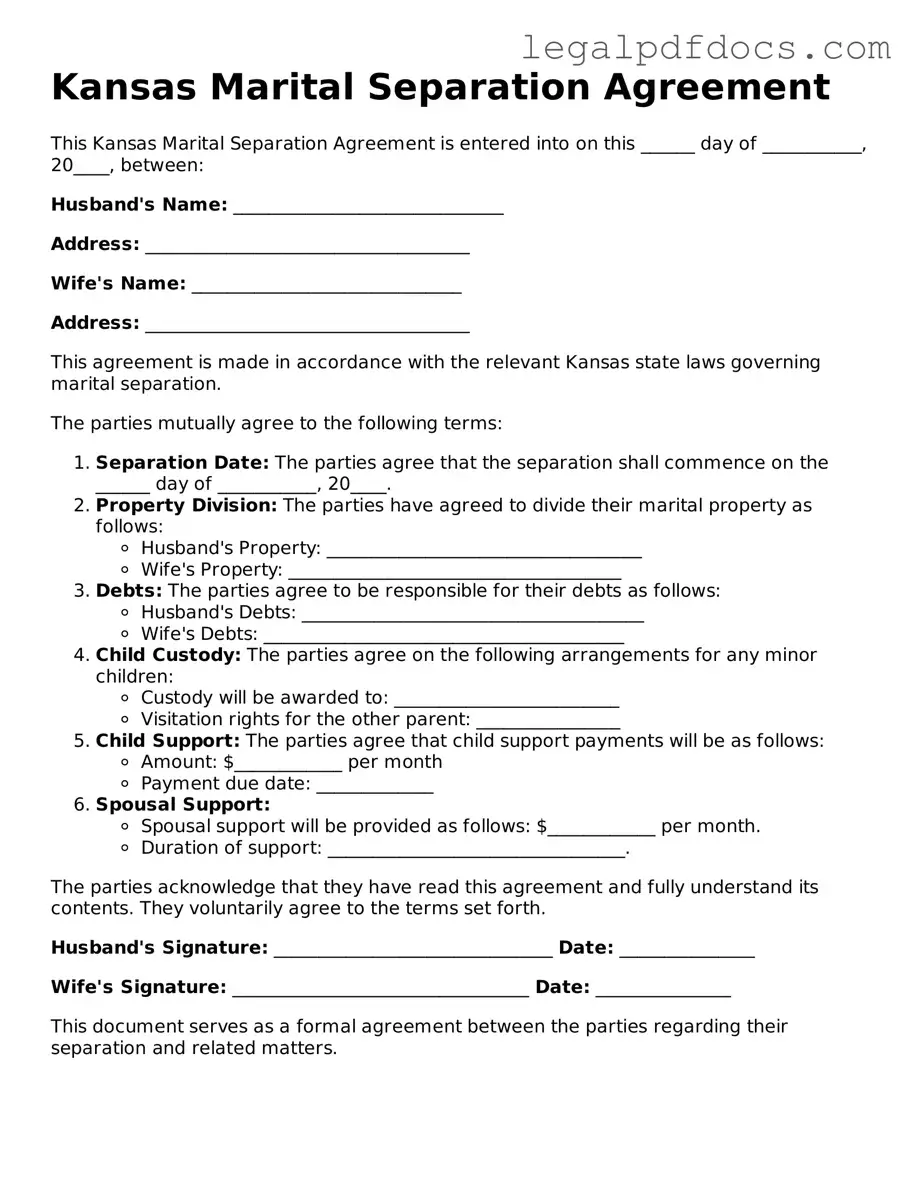Official Marital Separation Agreement Form for Kansas
A Kansas Marital Separation Agreement is a legal document that outlines the terms and conditions agreed upon by spouses who wish to live apart while remaining legally married. This agreement addresses various aspects of the separation, including property division, financial responsibilities, and child custody arrangements. Understanding this form is essential for ensuring a smooth transition during a challenging time.
To start the process, fill out the form by clicking the button below.
Open Marital Separation Agreement Editor Here
